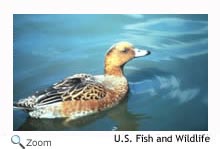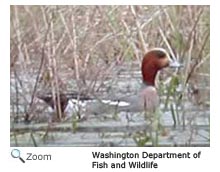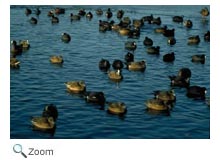Eurasian Wigeon - Mareca penelope |
|||||||||||
Description
Range
|
HabitatThe Eurasian wigeon is found on marshes, ponds, lakes, bays, and fields. Diet
Life CycleThe female lays 7 or 8 eggs in a down and grass filled shallow depression in the ground. The nest is usually well-hidden by grass and is near the water. The female incubates the eggs for 24-25 days. The ducklings leave the nest and head to the water shortly after they hatch. They can feed themselves immediately, but the female stays with them until they fledge at 44-45 days old. Behavior
|
||||||||||
Audio Credit: xeno-canto.org David Farrow |
|||||||||||



 The Eurasian wigeon breeds in Eurasia and Northern Africa. In the winter, it is sometimes found on the Atlantic and Pacific coasts.
The Eurasian wigeon breeds in Eurasia and Northern Africa. In the winter, it is sometimes found on the Atlantic and Pacific coasts.

